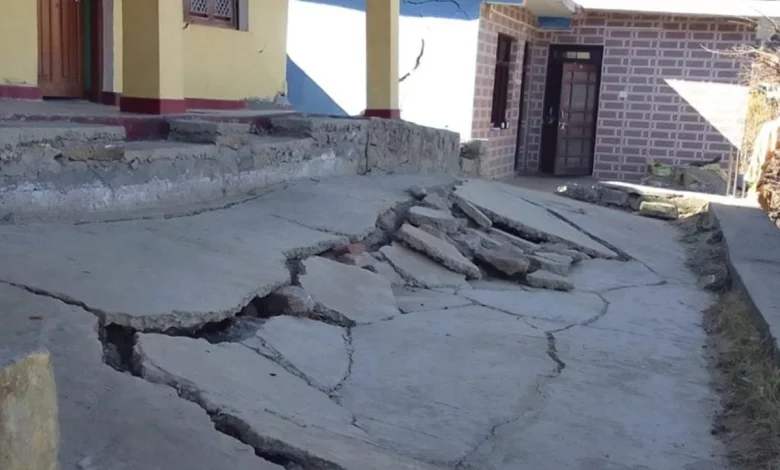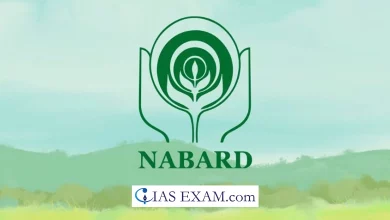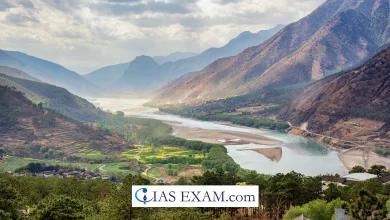Daily Current Affairs for UPSC
Land Subsidence
Syllabus- Government Policies and Interventions [GS Paper-2]

Context- In Joshimath, Uttarakhand, a hill town in Uttarakhand, cracks in the buildings and “sinking” land made headlines earlier in 2023.
What is subsistence on land?
- The gradual sinking or settling of the Earth’s surface, usually caused by the compaction of underground layers of soil, rock, or other materials, is known as land subsidence.
- It occurs when certain geological processes or the depletion of support structures beneath the land, such as aquifers, underground mines, or natural gas extraction, take place.
- Impact:
- It can cause damage to roads, buildings, and underground utilities in urban areas.
- By lowering the land’s elevation in relation to the sea level, it can also increase the likelihood of flooding along the coast.
- Subsidence can permanently damage farmland, disrupt the flow of water in rivers and canals, and affect irrigation systems in agricultural areas.
What has the CGWB discovered regarding the extraction of groundwater and land subsidence?
-
- Subsidence of Land as a result of Groundwater Extraction:
- The occurrence of “soil settlement,” or sinking as a result of mining-created voids, was demonstrated by digging operations carried out for mining activities. Comparative perceptions provoked specialists to examine the job of groundwater extraction in land subsidence in India.
- Subsidence of Land as a result of Groundwater Extraction:
- Proof of Land Subsidence in Various Areas:
-
- Groundwater extraction caused subsidence, which, in contrast to landslides and earthquakes, was gradual and barely noticeable annually.
- Studies using satellite-based examination of ground development have distinguished building distortions coming about because of groundwater withdrawals.
- From 2011 to 2017, the National Capital Region (NCR) sank an average of 15 millimeters per year, according to Sentinel-1 satellite data.
- Groundwater withdrawal from the NCR was exacerbated by urbanization and unplanned growth, which in turn contributed to subsidence.
- Kolkata and portions of eastern India additionally experience overexploited groundwater blocks and land subsidence.
What is the Status of Ground Water Extraction in India?
-
- Currently, groundwater is used by 85% of the rural and 50% of the urban population, making India the largest user of groundwater worldwide.
- According to the National Compilation of Dynamic Ground Water Resources in India, India’s stage of groundwater extraction—the percentage of groundwater used against recharge—has decreased from 61.6% in 2020 to 60.08 percent in 2022.
- Depletion of Groundwater in the Northwest of India:
-
- Agrarian practices in N-W India vigorously rely upon groundwater withdrawal because of restricted storm downpour.
- Information from the CGWB uncovers disturbing degrees of groundwater double-dealing:
- Punjab: “Over exploited” refers to 76% of groundwater blocks.
- Chandigarh: 64% of groundwater blocks are ‘over taken advantage of.’
- Delhi: “Over exploited” refers to approximately 50% of groundwater blocks.
Associated Issues:
- Unregulated Pumping: A few states impacted by exhaustion of groundwater give free or vigorously financed power (counting sun based siphons) for siphoning groundwater for inundated farming.
- This empowers overexploitation and consumption of scant groundwater assets.
- Preference to Water-Intensive Crops: Because wheat and rice are water-intensive crops that rely heavily on ground water for growth, the minimum support price creates highly skewed incentive structures in their favor.
- This makes groundwater a superb asset for their cultivation.
- Intrusion of Salinity: In seaside regions, exorbitant groundwater siphoning can cause saline water interruption.
- Seawater enters the aquifers as fresh groundwater is depleted, rendering the water unfit for a variety of uses and having a negative impact on agriculture and ecosystems.
- Environmental effects: Ecosystems are impacted by groundwater depletion by altering the flow of water in rivers, lakes, and wetlands.
- Aquatic life and biodiversity suffer as a result of this disruption of the natural balance. Additionally, it affects the availability of water for groundwater-dependent plants and animals.





.png)



